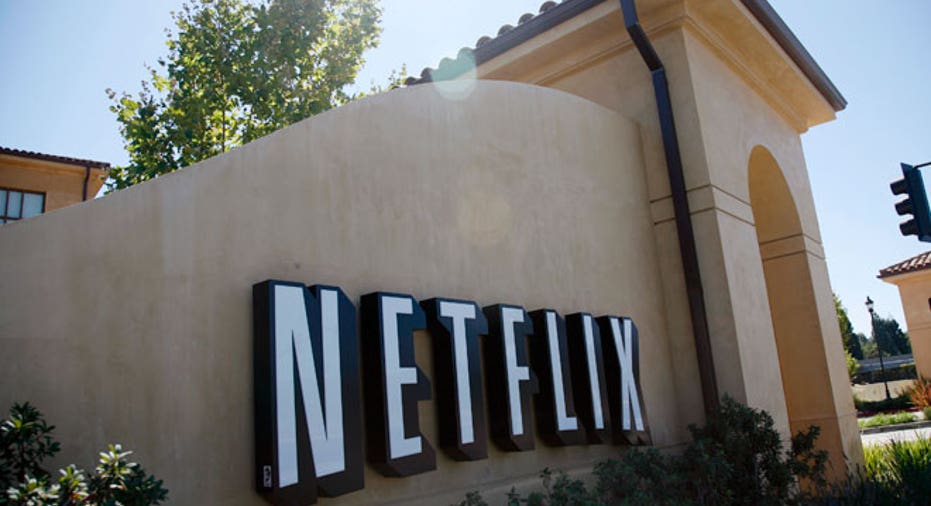Report: Netflix Throttles Videos on AT&T, Verizon

AT&T and Verizon Communications were on the defensive last week after accusations swirled they were throttling the quality of Netflix Inc. video on their wireless networks.
It turns out it was Netflix that was doing the throttling.
Netflix, a leading proponent of open Internet rules, has been lowering the quality of its video for customers watching its service on AT&T or Verizon Communications wireless networks.
The popular video service said Thursday that for more than five years it has limited its videos to most wireless carriers across the globe, including AT&T and Verizon, to "protect consumers from exceeding mobile data caps," which may discourage future viewing.
Netflix said it caps its streams at 600 kilobits-per-second--far slower than what should be possible on modern wireless networks. It hasn't previously disclosed the practice. The issue came to light after T-Mobile's CEO last week said Verizon and AT&T customers were receiving lower-quality Netflix streams. The carriers denied throttling Netflix videos.
The fact that Netflix, not the carriers, is responsible for the lower quality illustrates the dilemma mobile app makers face with data caps. The majority of all traffic on wireless networks is video, so providers must balance video quality against data consumption. Watching two hours of HD video on Netflix would consume up to 6 gigabytes of data, Netflix says. That is an entire month's allowance under an $80 a month Verizon plan.
Netflix said it doesn't limit its video quality at two carriers: T-Mobile US Inc. and Sprint Corp., because "historically those two companies have had more consumer-friendly policies." When customers exceed their data plans on Sprint or T-Mobile, the carriers usually slow their network connections, rather than charge overage fees.
Netflix has been an outspoken supporter of "net neutrality," the concept that all Internet traffic should be treated equally. It has railed against the idea that it should compensate broadband providers or mobile carriers for the amount of data that its customers eat up, and it has been quick to point out any sign of discrimination by carriers regarding data caps. The net neutrality rules apply to Internet providers but not content companies like Netflix.
On Thursday, Netflix said it is also exploring "new ways to give members more control in choosing video quality." It is working on a "mobile data saver" to be rolled out this year that would allow consumers to stream Netflix's app in a way that preserves bandwidth.
Verizon and AT&T said they don't throttle or manipulate video content. "Verizon delivers video content at the resolution provided by the host service, whether that's Netflix or any other provider," a Verizon spokesman said.
At T-Mobile, Netflix quality is reduced when customers have activated Binge-On, a feature that lets customers stream unlimited video from video providers at lower quality. Sprint used to throttle almost all video traffic on its network, but after disclosing the practice last year, it was forced to stop because of public outcry.
Netflix has a video on its website that includes real time data on the quality of the video stream. Watching that video on all four carriers, even when connection speeds were strong, shows AT&T and Verizon streams are capped at lower quality.
Milan Milanović, who works in the IT industry and monitors carrier networks as a hobby, was among the first to notice, and posted a video on YouTube showing the lower quality streams. Mr. Milanović's method was replicated by The Wall Street Journal.
AT&T and Verizon are the two largest carriers in the country--about three-quarters of the nation's monthly wireless subscribers are their customers. Their networks face enormous strain from all that traffic. If several thousand people in one area start streaming high-definition Netflix videos, speeds for all users in the area could be reduced from congestion.
Jan Ozer, a consultant who helps companies optimize online video, said Netflix's strategy is a smart one. "If they were upfront about it, they could say, 'We're trying to make sure our users don't consume all their bandwidth.'"
Over Wi-Fi and other wired broadband connections, Netflix is the largest data consumer, accounting for 37% of all downstream Internet data traffic in North America during peak periods, according to Sandvine, a networking company that tracks Internet use. There is much less use over mobile networks: During peak periods, Netflix makes up just 3.4% of all downstream mobile data traffic, ranking it ninth. YouTube is No. 1 at just over 20%.
Netflix got into high-profile fights with home Internet providers in 2014. The company had accused Internet providers of refusing to connect their networks directly to its specialized video servers for free, which it said resulted in buffering and lower video quality for consumers. Netflix eventually settled those disputes by paying Internet providers for direct connections into their networks, thus reducing bottlenecks.



















